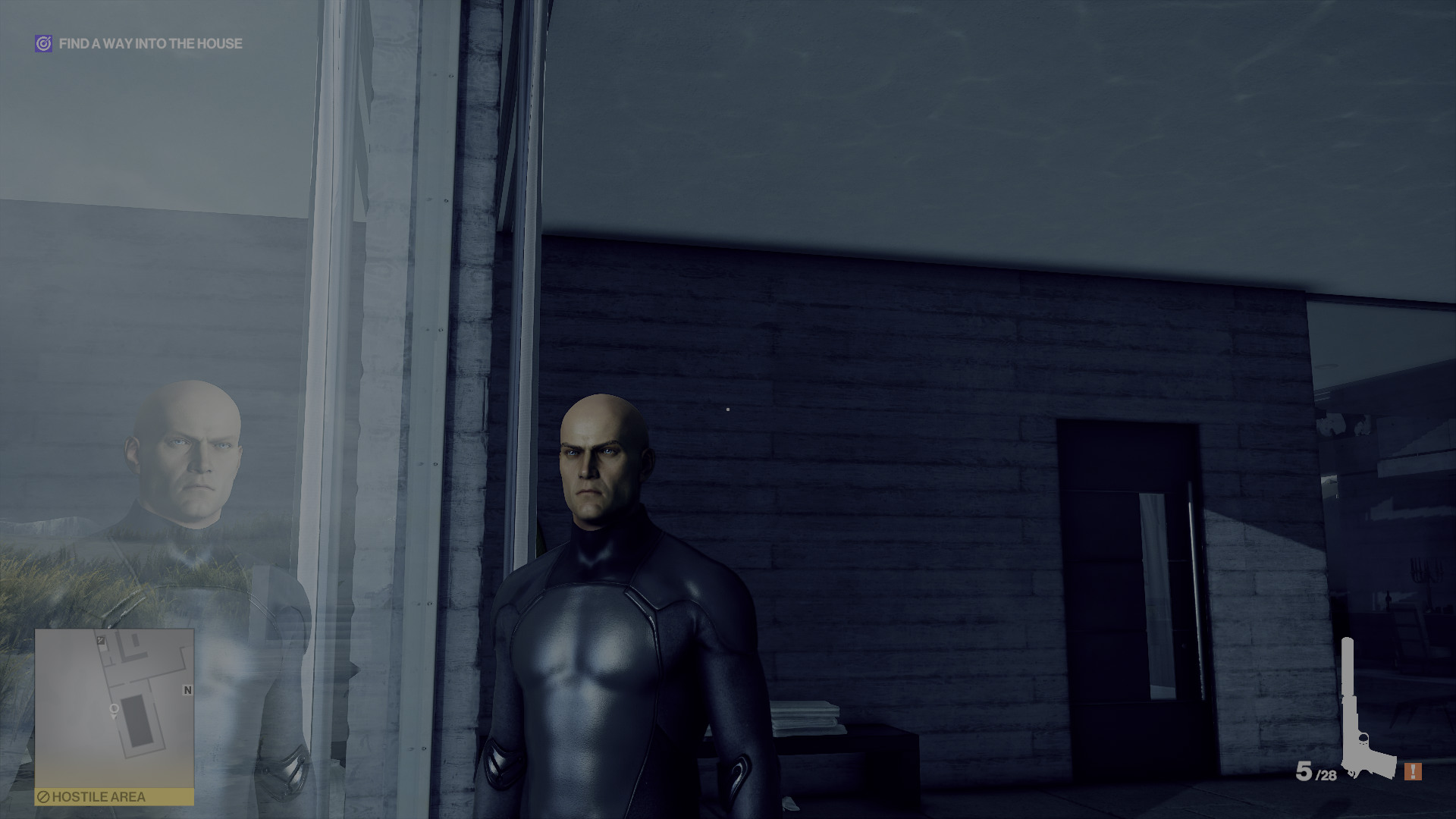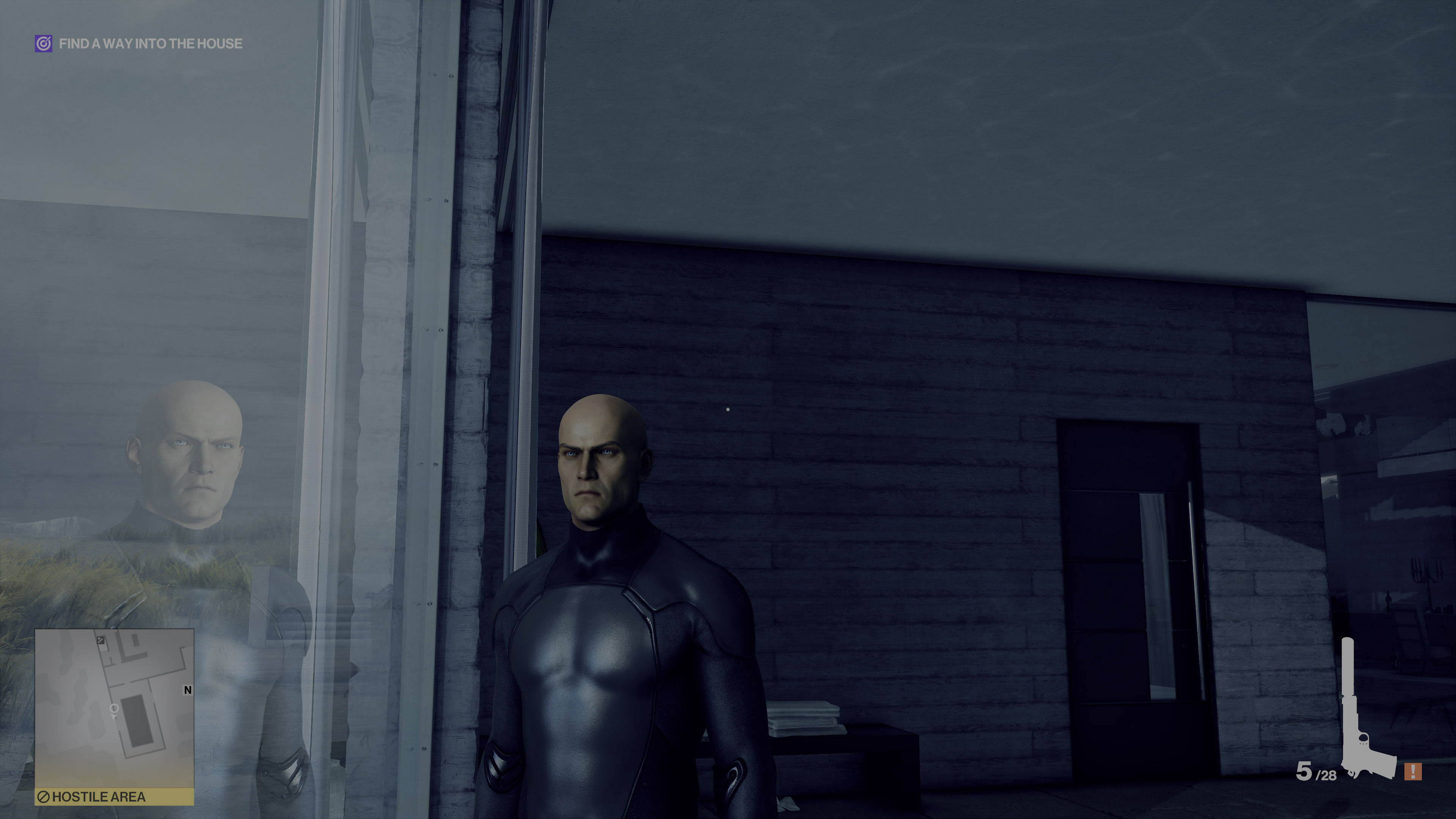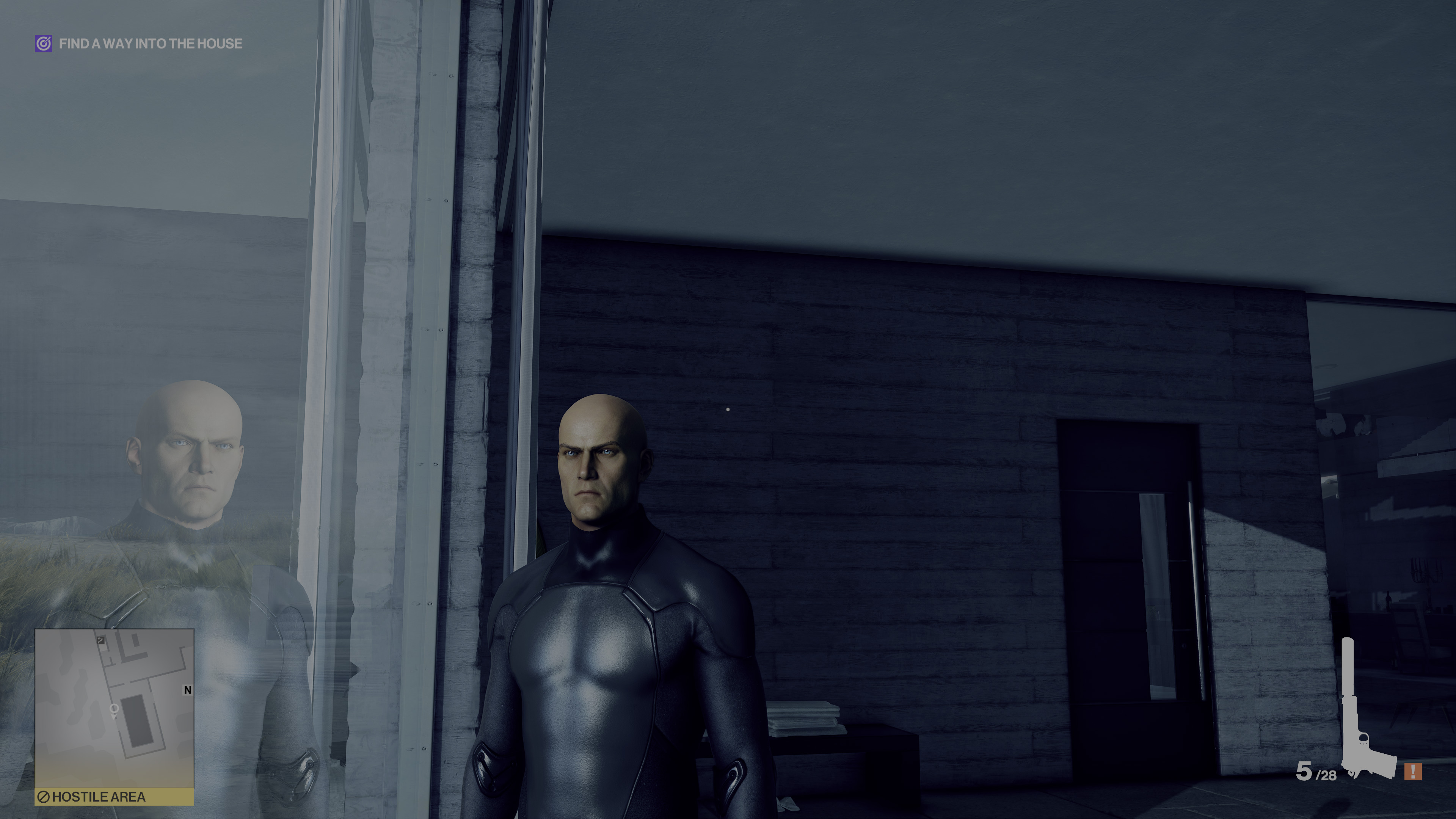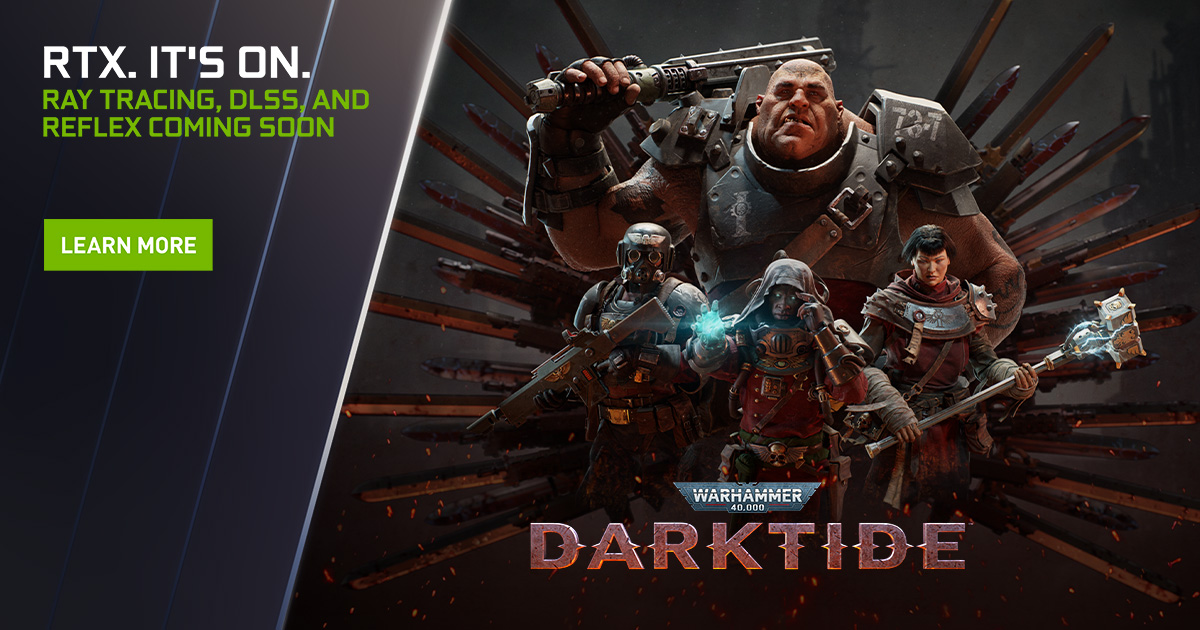Metro Exodus Enhanced Edition does. It's not a new game, it's the same game as Metro Exodus which doesn't.As Metro Exodus Enhanced Edition does...
You are using an out of date browser. It may not display this or other websites correctly.
You should upgrade or use an alternative browser.
You should upgrade or use an alternative browser.
GART: Games and Applications using RayTracing
- Thread starter BRiT
- Start date
- Status
- Not open for further replies.
The game is supposedly using UE5? Then there's that option at least.
But this just highlights that we're nearing the end of crossgen period, and many games are starting to look at RT as a baseline h/w feature. Which means that there will definitely be games which will require RT h/w soon.
It’s been a really long time since we’ve had PC games that wouldn’t run on old hardware. Good point on UE5. Pascal supports Nanite and SW Lumen just fine so I’ll be surprised if those users are left out in the cold.
DegustatoR
Veteran
That's unless the games will start requiring DX12U for other things besides RT though. Which can happen just as easily considering what we have as feature sets in consoles.It’s been a really long time since we’ve had PC games that wouldn’t run on old hardware. Good point on UE5. Pascal supports Nanite and SW Lumen just fine so I’ll be surprised if those users are left out in the cold.
Speaking of RTXGI, I've been experimenting with it a bit. As a word of caution, I'm not a dev so take these results with a grain of salt.
It's really good. You can achieve results that look close to the Epic Lumen GI settings at first glance and performs much faster (52 fps to 72 fps in my project) You can adjust the intensity of the RTXGI lighting in a way that it looks close to Epic Lumen settings without losing performance.


Still, it's pretty clear Lumen has higher quality, it covers more detail and shades even tiny stuff. But yeah the average user will likely not notice, RTXGI is a great alternative when you want to build high performance games.
When you compare RTXGI to Lumen's high settings though, the performance difference starts to get a bit less. Lumen has still higher precision I'd say, but the overall scene gets darker than both RTXGI at my settings and Epic Lumen.
Keep in mind this scene is just a small room, I have no idea how RTXGI handles open worlds with massive draw distance.
But there's a huge caveat with RTXGI: it doesn't handle reflections. You can see in my project I am using SSR with RTXGI. With Lumen however, even on high, you get off screen reflections without any hit to performance compared to SSR. So that's a huge bonus for Lumen.
If you'd enable RTXGI+RT reflections it will run much slower than Lumen. So Lumen at high settings probably offers the best performance/visual ratio. For most gamers though SSR are fine and with RTXGI you can achieve high quality lighting with great performance.
In short, I'm pretty impressed by RTXGI and I hope devs will use it !
It's really good. You can achieve results that look close to the Epic Lumen GI settings at first glance and performs much faster (52 fps to 72 fps in my project) You can adjust the intensity of the RTXGI lighting in a way that it looks close to Epic Lumen settings without losing performance.


Still, it's pretty clear Lumen has higher quality, it covers more detail and shades even tiny stuff. But yeah the average user will likely not notice, RTXGI is a great alternative when you want to build high performance games.
When you compare RTXGI to Lumen's high settings though, the performance difference starts to get a bit less. Lumen has still higher precision I'd say, but the overall scene gets darker than both RTXGI at my settings and Epic Lumen.
Keep in mind this scene is just a small room, I have no idea how RTXGI handles open worlds with massive draw distance.
But there's a huge caveat with RTXGI: it doesn't handle reflections. You can see in my project I am using SSR with RTXGI. With Lumen however, even on high, you get off screen reflections without any hit to performance compared to SSR. So that's a huge bonus for Lumen.
If you'd enable RTXGI+RT reflections it will run much slower than Lumen. So Lumen at high settings probably offers the best performance/visual ratio. For most gamers though SSR are fine and with RTXGI you can achieve high quality lighting with great performance.
In short, I'm pretty impressed by RTXGI and I hope devs will use it !
Speaking of RTXGI, I've been experimenting with it a bit. As a word of caution, I'm not a dev so take these results with a grain of salt.
It's really good. You can achieve results that look close to the Epic Lumen GI settings at first glance and performs much faster (52 fps to 72 fps in my project) You can adjust the intensity of the RTXGI lighting in a way that it looks close to Epic Lumen settings without losing performance.


Still, it's pretty clear Lumen has higher quality, it covers more detail and shades even tiny stuff. But yeah the average user will likely not notice, RTXGI is a great alternative when you want to build high performance games.
When you compare RTXGI to Lumen's high settings though, the performance difference starts to get a bit less. Lumen has still higher precision I'd say, but the overall scene gets darker than both RTXGI at my settings and Epic Lumen.
Keep in mind this scene is just a small room, I have no idea how RTXGI handles open worlds with massive draw distance.
But there's a huge caveat with RTXGI: it doesn't handle reflections. You can see in my project I am using SSR with RTXGI. With Lumen however, even on high, you get off screen reflections without any hit to performance compared to SSR. So that's a huge bonus for Lumen.
If you'd enable RTXGI+RT reflections it will run much slower than Lumen. So Lumen at high settings probably offers the best performance/visual ratio. For most gamers though SSR are fine and with RTXGI you can achieve high quality lighting with great performance.
In short, I'm pretty impressed by RTXGI and I hope devs will use it !
RTX GI uses light probes right? Dynamic probe grid GI never really took off and it seems to be already superseded by surface caching.
That's unless the games will start requiring DX12U for other things besides RT though. Which can happen just as easily considering what we have as feature sets in consoles.
Mesh shading? Maybe. Sampler feedback and VRS? Nah.
Speaking of RTXGI, I've been experimenting with it a bit. As a word of caution, I'm not a dev so take these results with a grain of salt.
It's really good. You can achieve results that look close to the Epic Lumen GI settings at first glance and performs much faster (52 fps to 72 fps in my project) You can adjust the intensity of the RTXGI lighting in a way that it looks close to Epic Lumen settings without losing performance.


Still, it's pretty clear Lumen has higher quality, it covers more detail and shades even tiny stuff. But yeah the average user will likely not notice, RTXGI is a great alternative when you want to build high performance games.
When you compare RTXGI to Lumen's high settings though, the performance difference starts to get a bit less. Lumen has still higher precision I'd say, but the overall scene gets darker than both RTXGI at my settings and Epic Lumen.
Keep in mind this scene is just a small room, I have no idea how RTXGI handles open worlds with massive draw distance.
But there's a huge caveat with RTXGI: it doesn't handle reflections. You can see in my project I am using SSR with RTXGI. With Lumen however, even on high, you get off screen reflections without any hit to performance compared to SSR. So that's a huge bonus for Lumen.
If you'd enable RTXGI+RT reflections it will run much slower than Lumen. So Lumen at high settings probably offers the best performance/visual ratio. For most gamers though SSR are fine and with RTXGI you can achieve high quality lighting with great performance.
In short, I'm pretty impressed by RTXGI and I hope devs will use it !
Thanks for the write-up. In my experience as a dev working in UE5 right now, Lumen does a great job visually representing several bounces for diffuse interreflection, but I don't believe the layperson will appreciate that precision any more than they will with RTXGI even at low quality. Most people do not understand the physics underpinning light transport and would have difficulty judging how accurate the lighting is compared to ground truth, regardless of the solution. Granted, this is only for diffuse interreflection. Specular reflections are a different story, and are typically more noticeable to the average layperson when they are poorer in quality (especially perfectly specular reflections like mirrors). Unfortunately, while the specular reflections for Lumen are performant, surface cache-based reflections are too poor in quality to be scrutinized up close, and Nanite proxy meshes can cause quality issues with specular reflections as well. RTX is the better choice for specular reflections, IMO, because the cost is more visually appreciable by the average lay person.
The visual latency of Lumen is also a reason why I will not be using it in my project. It's too distracting. I'm currently using RTXGI with RT Reflections and I don't see that changing any time soon.
______________________________________________
On another note, there appears to be some confusion about RT reflections not being upscaled by DLSS. While it is true that NVIDIA currently has experimental RT features for DLSS in the works like motion vector data for reflection sources, RT reflections are already included in the input for DLSS and can upscale pretty decently provided you:
- Use the recommended mip-map bias settings
- Use sufficiently high input resolution
- Tweak the value for reflection TAA parameter when necessary
- Tweak the value of the denoised temporal accumulation parameter if the denoising is counterproductively sabotaging the data necessary for good jitter sampling
That being said, I'm looking forward to future improvements to RT effects with DLSS, as right now, secondary buffers can't be used with it which limits its versatility.
With the Hitman 3 Demo you can play Hitman 1 and 2 missions through it. Two more games with Raytracing and DLSS.
Funny you should say that as I was just playing through them last night (the full game though).
Here are some screens I took last night where RT reflections with no DLSS and RT reflections with DLSS can be directly compared.
Hitman 3 RT Reflections: 1080p (no DLSS) vs 4K DLSS Quality (1080p input resolution):
Hitman 3 RT Reflections: 4k (no DLSS) vs 4k DLSS Quality (1080p input resolution):
Source images:

1080p (no DLSS)

4k (no DLSS)

4K DLSS Quality (1080p input resolution)
The 1080p reflections are clearly upscaled to 4k in this example, with the stair-stepping around 47's head being nearly identical to the pre-DLSS 4k image.
The visual latency of Lumen is also a reason why I will not be using it in my project. It's too distracting. I'm currently using RTXGI with RT Reflections and I don't see that changing any time soon.
Interesting. Does RTX GI update every probe each frame? I thought it also had a few frames latency.
Double check IMO If those are really RT -a number of Windows in Hitman 2 are actually still RTTFunny you should say that as I was just playing through them last night (the full game though).
Here are some screens I took last night where RT reflections with no DLSS and RT reflections with DLSS can be directly compared.
Hitman 3 RT Reflections: 1080p (no DLSS) vs 4K DLSS Quality (1080p input resolution):
Hitman 3 RT Reflections: 4k (no DLSS) vs 4k DLSS Quality (1080p input resolution):
Source images:

1080p (no DLSS)

4k (no DLSS)

4K DLSS Quality (1080p input resolution)
The 1080p reflections are clearly upscaled to 4k in this example, with the stair-stepping around 47's head being nearly identical to the pre-DLSS 4k image.
Interesting. Does RTX GI update every probe each frame? I thought it also had a few frames latency.
You have the option to select how often it updates, and you can have it update in real-time.
Double check IMO If those are really RT -a number of Windows in Hitman 2 are actually still RTT
I checked. Toggled the ray-tracing settings and it removed the reflections when off. It's definitely ray traced.
How are you, btw, Alex? It's brainchild (Brandon).
DegustatoR
Veteran
Apparently there are some screenshots floating around showing Sackboy and Returnal getting raytracing support when being ported to PC:
Nice. Hopefully in the next console generation settings menu “Raytraced Reflections Quality” is just “Reflections Quality”.Apparently there are some screenshots floating around showing Sackboy and Returnal getting raytracing support when being ported to PC
Tomasz Stochastic said:After 7 months of tinkering, I've finally pushed a major update to my toy rustlang Vulkan renderer `kajiya`.
A new dynamic global illumination system using lots of ReSTIR brings larger scenes, quicker response, and less noise.
Juicy tech details: https://github.com/EmbarkStudios/kajiya/blob/main/docs/gi-overview.md
Interesting video:
RTXDI is based on ReSTIR and is a perfect example of "render smarter, not harder". It has come a long way in a very short amount time.
ReSTIR GI has also built upon the success of ReSTIR. Interesting enough, it is a different algorithm than the one underpinning RTXGI, since it's not performant enough to be used in video games, even if the results can be updated at interactive rates.
ReSTIR GI: Path Resampling for Real-Time Path Tracing | Research
Even with the advent of hardware-accelerated ray tracing in modern GPUs, only a small number of rays can be traced at each pixel in real-time applications. This presents a significant challenge for path tracing, even when augmented with state-of-the art denoising algorithms. While the...
DegustatoR
Veteran

Warhammer 40,000: Darktide Launches November with NVIDIA DLSS, NVIDIA Reflex & Ray Tracing
Amp up performance, minimize system latency, and experience advanced ray-traced effects at their highest detail levels with a GeForce RTX graphics card, desktop or laptop.
www.nvidia.com
As you can see in the trailer above, Warhammer 40,000: Darktide is a stunningly-rendered game. But if you have a GeForce RTX graphics card, desktop or laptop, you can take those visuals to new heights with the addition of ray-traced reflections, and amazing RTX Global Illumination (RTXGI) effects.
- Status
- Not open for further replies.
Similar threads
- Replies
- 26
- Views
- 2K
- Replies
- 1K
- Views
- 80K
- Replies
- 0
- Views
- 1K

